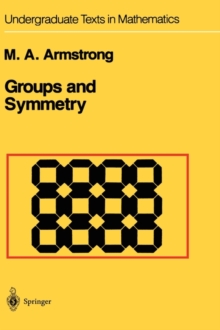
Mathematical Analysis : An Introduction PDF
by Andrew Browder
Part of the Undergraduate Texts in Mathematics series
Description
This is a textbook suitable for a year-long course in analysis at the ad- vanced undergraduate or possibly beginning-graduate level.
It is intended for students with a strong background in calculus and linear algebra, and a strong motivation to learn mathematics for its own sake.
At this stage of their education, such students are generally given a course in abstract algebra, and a course in analysis, which give the fundamentals of these two areas, as mathematicians today conceive them.
Mathematics is now a subject splintered into many specialties and sub- specialties, but most of it can be placed roughly into three categories: al- gebra, geometry, and analysis.
In fact, almost all mathematics done today is a mixture of algebra, geometry and analysis, and some of the most in- teresting results are obtained by the application of analysis to algebra, say, or geometry to analysis, in a fresh and surprising way.
What then do these categories signify? Algebra is the mathematics that arises from the ancient experiences of addition and multiplication of whole numbers; it deals with the finite and discrete.
Geometry is the mathematics that grows out of spatial experience; it is concerned with shape and form, and with measur- ing, where algebra deals with counting.
Information
-
Download - Immediately Available
- Format:PDF
- Publisher:Springer New York
- Publication Date:06/12/2012
- Category:
- ISBN:9781461207153
Information
-
Download - Immediately Available
- Format:PDF
- Publisher:Springer New York
- Publication Date:06/12/2012
- Category:
- ISBN:9781461207153










